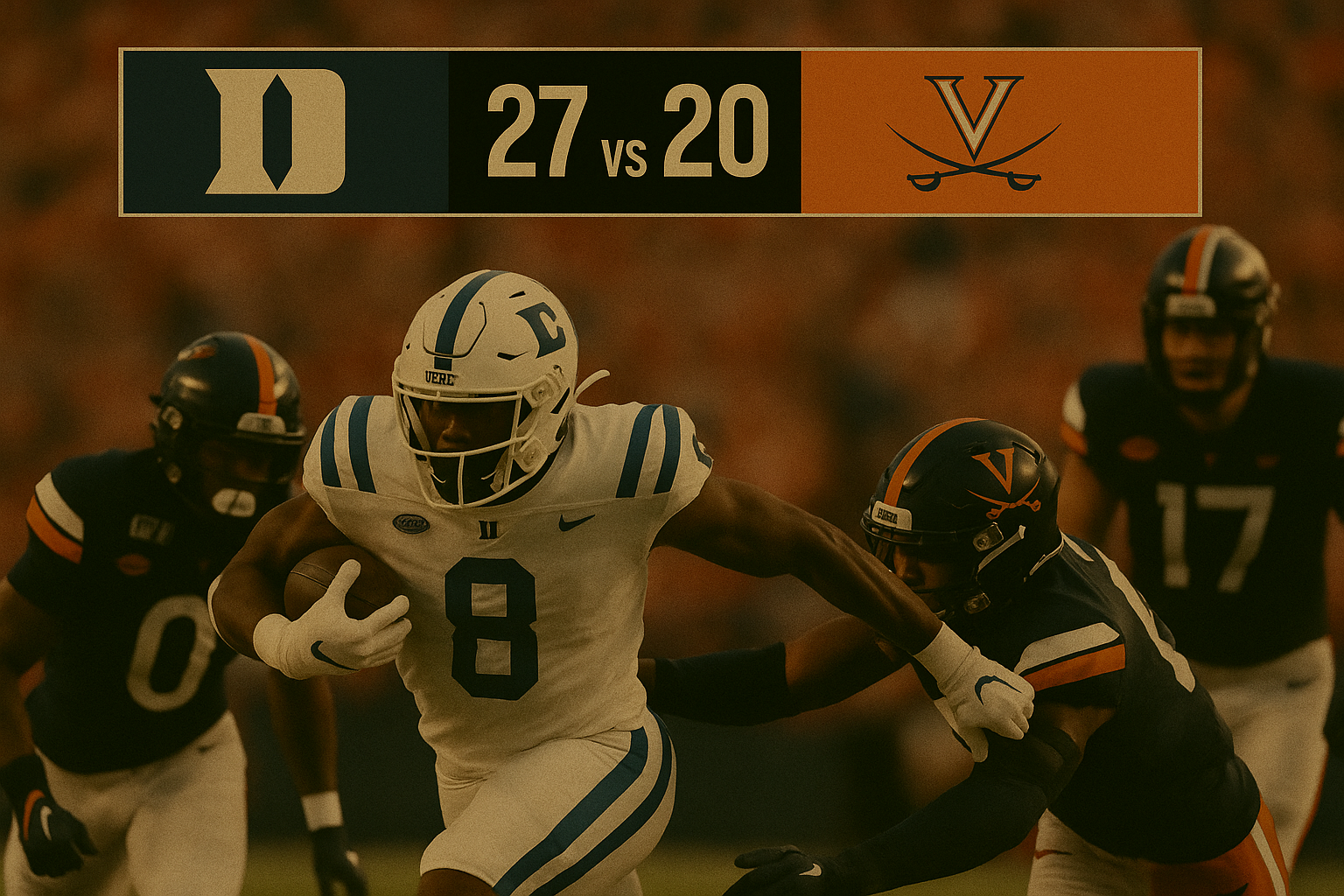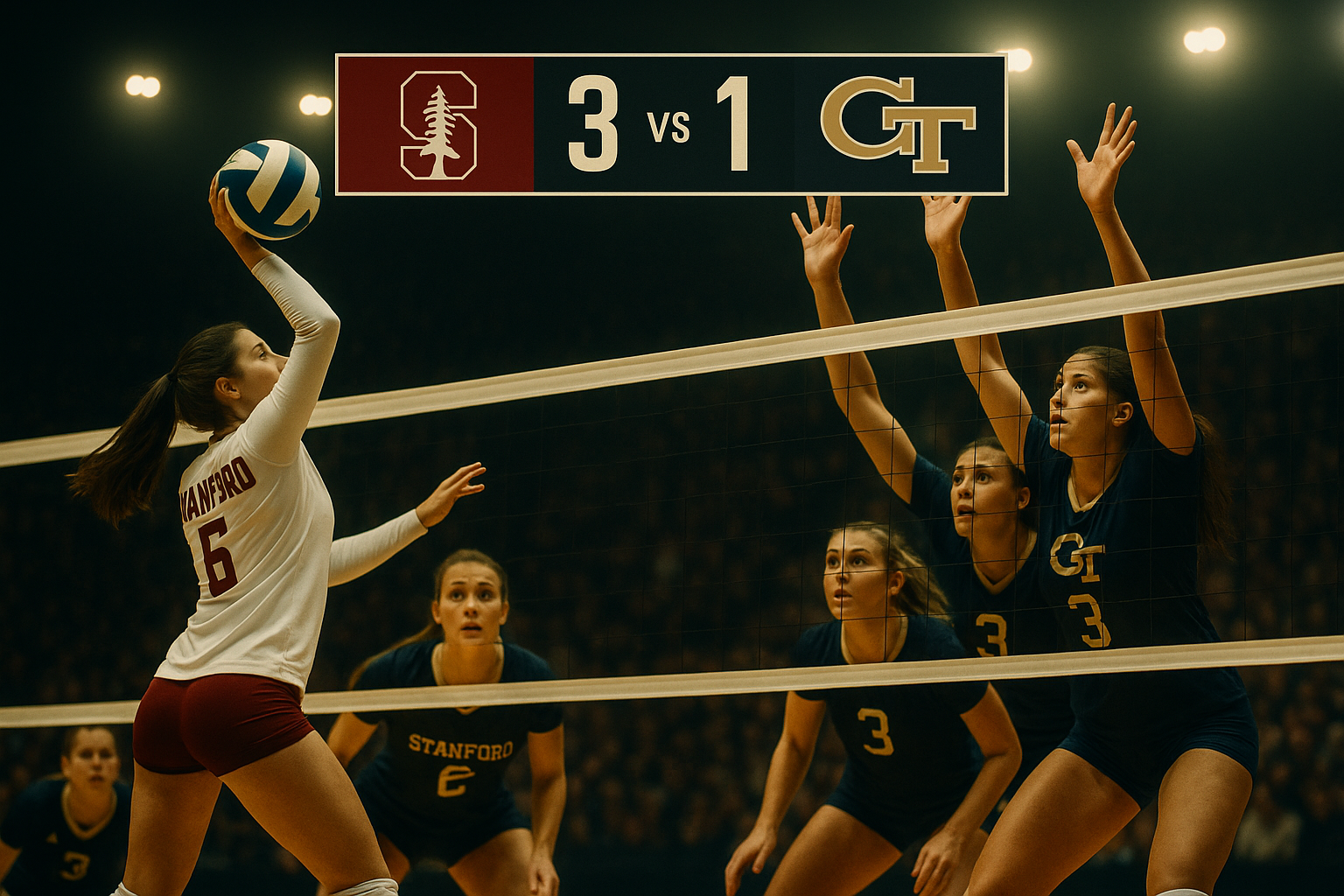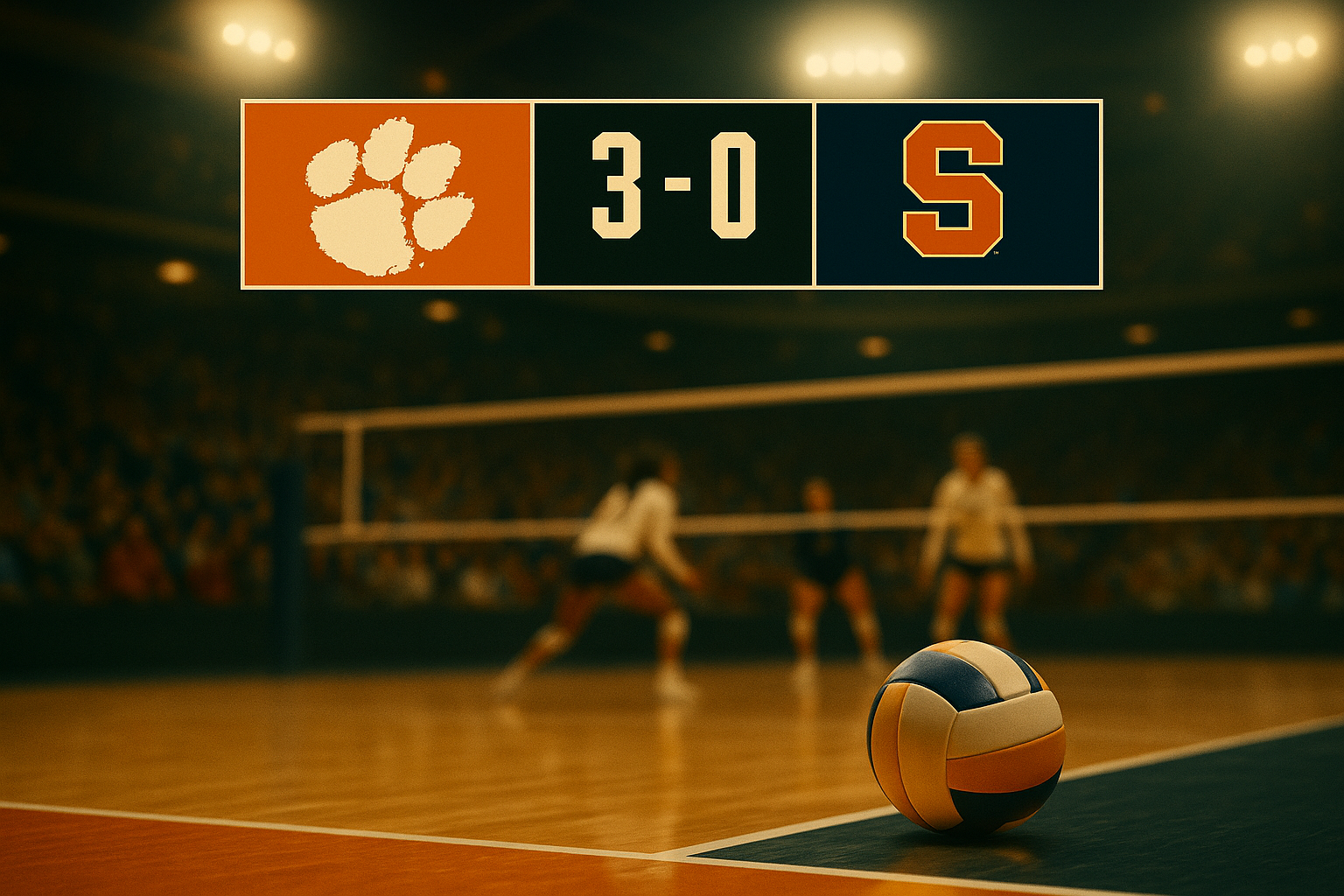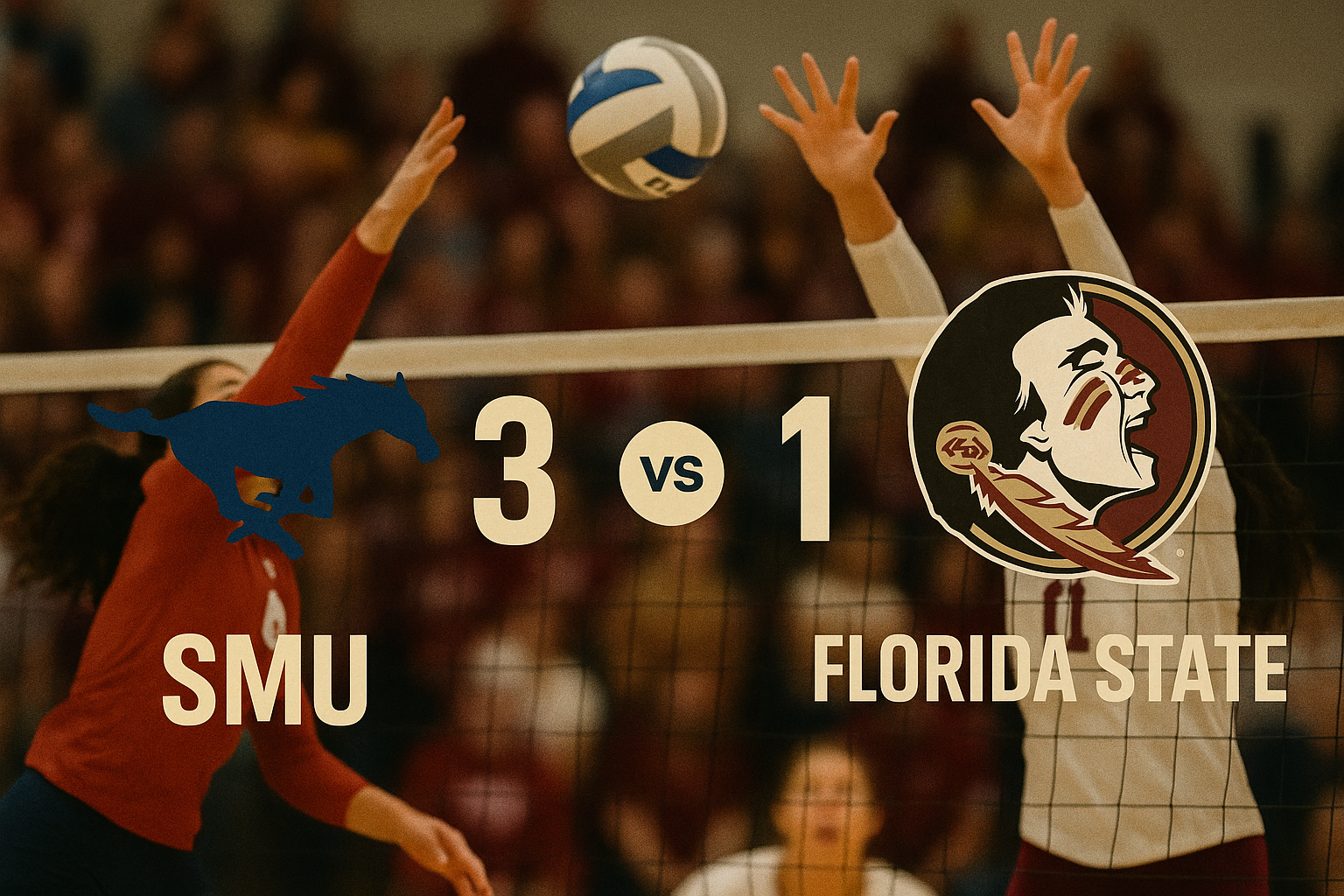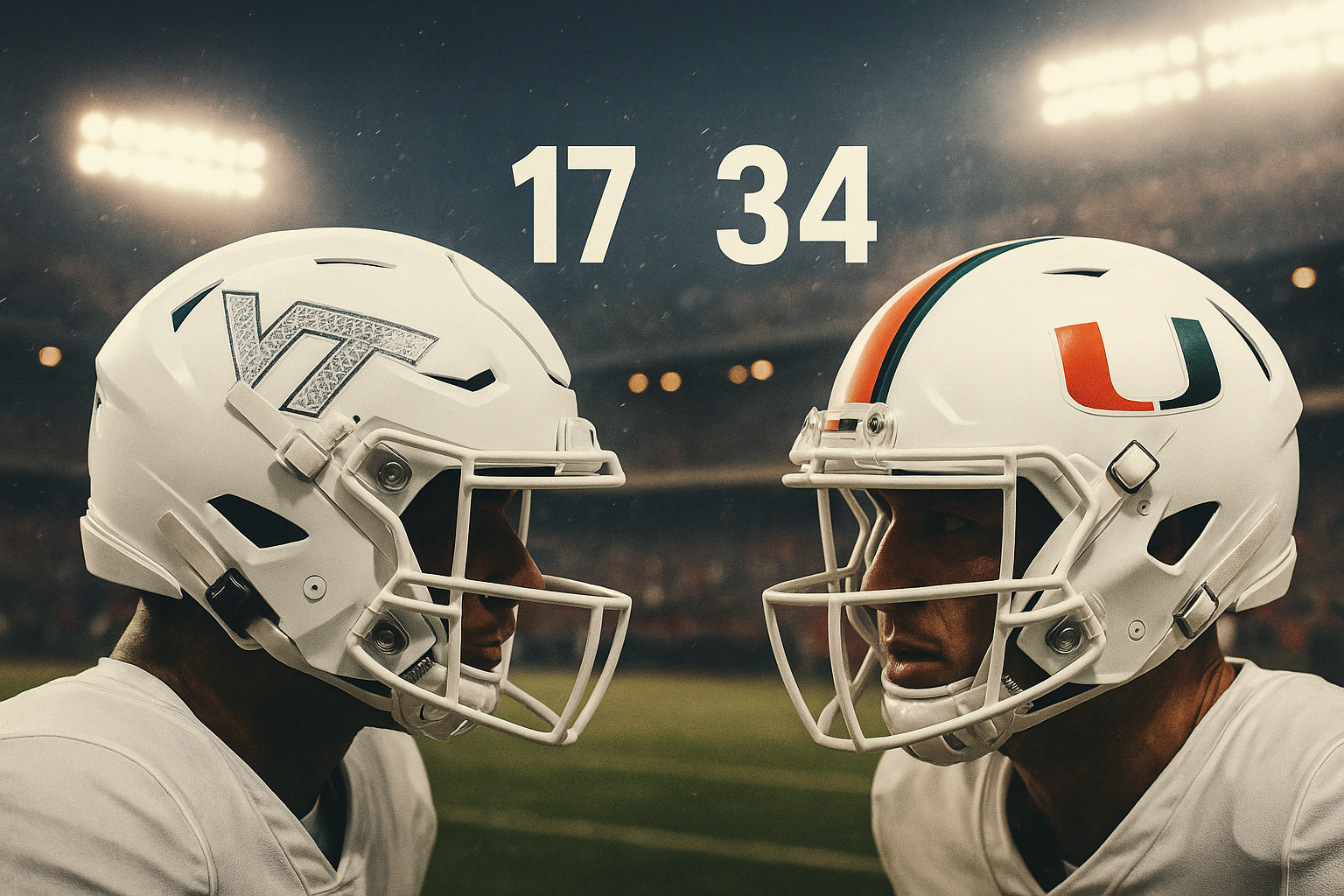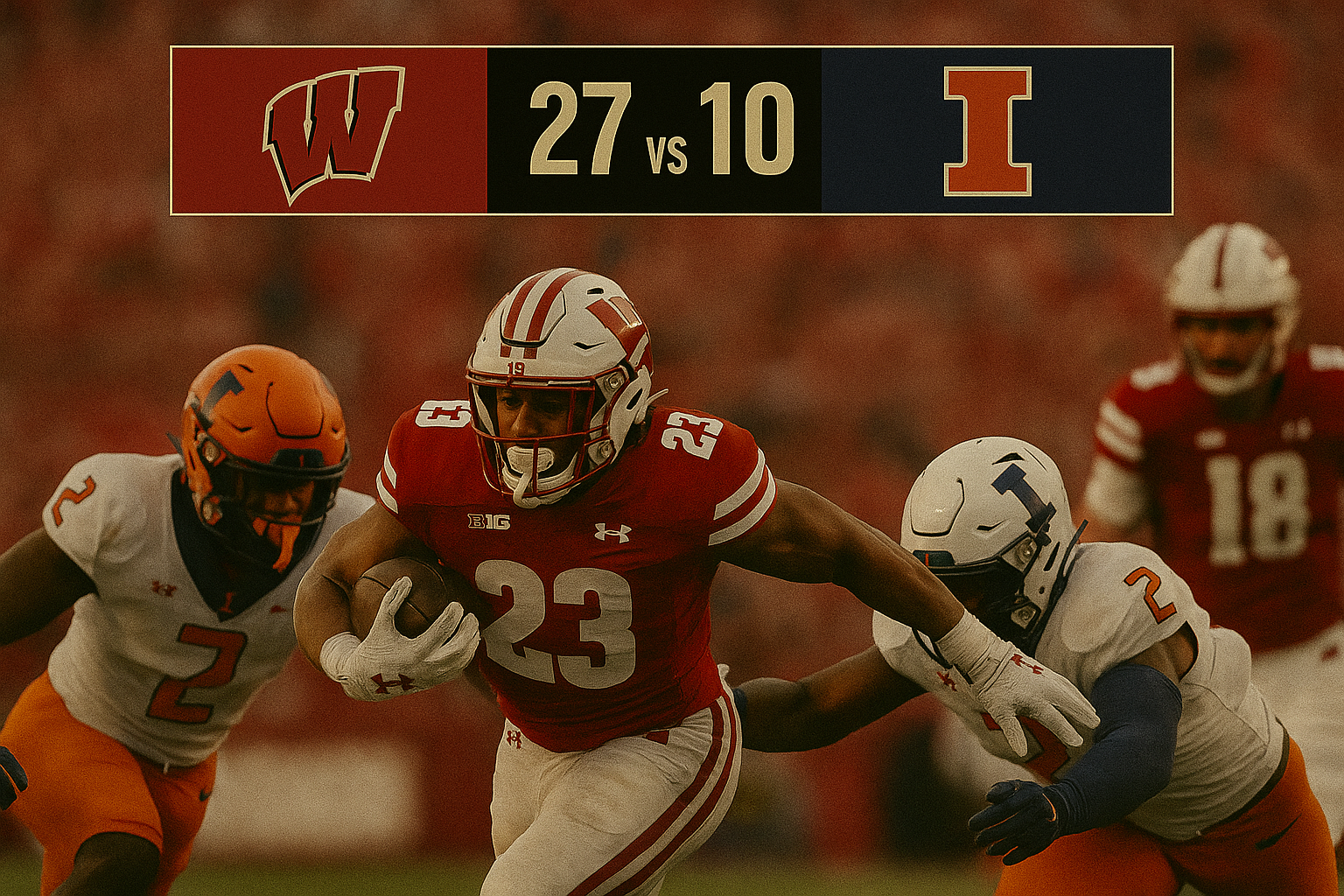No. 9 Miami Dominates Stanford with Second-Half Surge, Wins 42–7
Hurricanes Turn a Halftime Tie into a Statement Victory
MIAMI GARDENS, Fla. — The ninth-ranked Miami Hurricanes shook off a sluggish first half to dominate Stanford 42–7 on Saturday night at Hard Rock Stadium. Behind a career-best performance from running back Mark Fletcher Jr., Miami scored touchdowns on six of its final seven possessions to turn a 7–7 halftime tie into a decisive rout.
Fletcher led the charge with 106 rushing yards and three touchdowns, setting a new career high while powering an offense that rediscovered its rhythm. Quarterback Carson Beck bounced back from last week’s struggles, completing 21 of 28 passes for 189 yards and one touchdown, as Miami outgained Stanford 404–144.
The victory improved Miami’s record to 6–1 overall and 2–1 in ACC play, while Stanford fell to 3–5 (2–3 ACC) after being outscored 35–0 in the second half.
A Flat Start for the Hurricanes
The first 30 minutes were far from the dominance Miami fans expected. The Hurricanes missed an early scoring chance when kicker Carter Davis pushed a 43-yard field goal wide, ending his streak of consecutive makes. Stanford capitalized, marching 74 yards on its opening drive to take a 7–0 lead.
Running back Cole Tabb kept the drive alive with a fourth-down conversion and later broke free for a 28-yard run to set up the Cardinal deep in Miami territory. Quarterback Ben Gulbranson capped the series with a nine-yard touchdown pass to Caden High, giving Stanford its first-ever lead over Miami in the programs’ inaugural meeting.
Miami’s offense sputtered through much of the half, plagued by penalties and missed assignments. But the Hurricanes’ defense found its footing, forcing multiple three-and-outs while neutralizing Stanford’s ground attack. Late in the second quarter, Miami finally broke through — Beck connected with CJ Daniels on a third-down fade for a six-yard touchdown to tie the game 7–7 heading into halftime.
Hurricanes Flip the Script
After the break, Miami looked like a completely different team. The defense forced a quick punt on Stanford’s first possession, and Malachi Toney delivered a 31-yard punt return to set up prime field position.
Two plays later, Beck found Tony Johnson on a 22-yard crossing route, and Fletcher finished the drive with back-to-back short-yardage runs, including a one-yard plunge that gave Miami its first lead at 14–7.
From that moment forward, the Hurricanes dominated every phase. Their defense smothered Stanford, holding the Cardinal to just 25 total yards across their next eight possessions. Miami’s defensive front — led by Armando Blount and Wesley Bissainthe — relentlessly pressured Gulbranson into hurried throws and costly mistakes.
Midway through the third quarter, Bissainthe intercepted a deflected pass and returned it to the Stanford three-yard line. Fletcher scored one play later for his second touchdown, extending the lead to 21–7.
On Stanford’s next series, Xavier Lucas picked off another pass and returned it to the 45-yard line. Four plays — all Fletcher runs — later, the sophomore tailback powered into the end zone again to make it 28–7 and put the game firmly out of reach.
Total Control in the Fourth Quarter
By the start of the fourth quarter, Miami had completely taken command. The Hurricanes controlled the ball for nearly 37 minutes, wearing down Stanford’s defense and dictating the tempo.
Beck continued to find his rhythm, going 4-for-4 through the air on an eight-play, 76-yard drive capped by a 17-yard touchdown run from Jordan Lyle, stretching the lead to 35–7.
Backup quarterback Emory Williams entered late and guided one final scoring march, ending with a short touchdown by Girard Pringle Jr. to seal the 42–7 victory — Miami’s largest ACC win since 2021.
Defensive Masterclass
While the offense exploded in the second half, it was Miami’s defense that set the tone for the turnaround. After allowing 74 yards on Stanford’s opening drive, the Hurricanes surrendered just 70 total yards the rest of the game.
Linebacker Bissainthe and cornerback Lucas each recorded interceptions that directly led to touchdowns. Blount anchored the defensive front with a key sack early in the third quarter, helping Miami finish with six tackles for loss, two sacks, and a suffocating 2.7 yards per play allowed.
Gulbranson managed just 50 passing yards after the opening drive and finished with two interceptions. The Hurricanes’ secondary blanketed receivers, while the front seven stuffed Tabb, holding him to 64 yards on 13 carries.
Cornerback Keionte Scott led Miami’s defense with five tackles, and the unit’s discipline and speed frustrated Stanford throughout the second half.
Special Teams Spark
Special teams provided the spark that shifted momentum. Malachi Toney totaled 73 punt return yards on just two attempts, including a 42-yard return that set up one of Fletcher’s touchdowns.
Toney’s field-flipping returns energized the crowd of 63,892 and consistently gave Miami short fields. He also led the Hurricanes with five receptions for 52 yards, showcasing his growing impact on both offense and special teams.
Historical Context and Momentum
The 42–7 victory marked the first-ever meeting between Miami and Stanford and stood as one of the Hurricanes’ most complete performances in recent memory. Miami has now outscored opponents 118–27 in the second half over its last four wins, highlighting the team’s ability to adjust and finish strong.
It was also a breakout game for Fletcher, who entered the night averaging just over four yards per carry but erupted for multiple long gains against one of the Pac-12’s more physical defenses. His three-touchdown effort tied Miami’s single-game high for the season and cemented his role as the team’s offensive centerpiece.
For Beck, the outing served as redemption after a four-interception performance against Louisville. His accuracy and composure restored confidence in the passing attack, while the offense’s balance — 205 passing yards and 199 rushing yards — underscored Miami’s versatility.
Stanford’s Struggles Continue
Stanford’s early promise quickly faded as Miami tightened its grip. After their opening touchdown, the Cardinal managed just two first downs the rest of the night. Penalties, poor pass protection, and inconsistent execution left the offense stagnant.
The loss dropped Stanford to 3–5 (2–3 ACC) with three of its last four games at home. Despite flashes of potential from Tabb and High, the Cardinal continue to struggle generating offense on the road, where they remain winless in conference play this season.
Looking Ahead
Miami now turns its attention to a road matchup against SMU in Dallas — its first out-of-state game this season. The Mustangs enter on a three-game winning streak and are undefeated at home, setting up a key test for the Hurricanes’ renewed momentum.
If Miami can replicate the balance and intensity it displayed against Stanford, the Hurricanes’ path toward national contention will remain wide open.
Final Takeaway
After a sluggish first half, the Miami Hurricanes unleashed a second-half masterpiece — a blend of aggression, execution, and dominance. The 42–7 win over Stanford showcased everything this team can be when firing on all cylinders.
With Fletcher leading the ground attack, Beck regaining his confidence, and a defense that refused to bend, Miami reasserted itself as a legitimate ACC and national contender.
The second half wasn’t just dominant — it was a statement of how high this team’s ceiling truly is.
